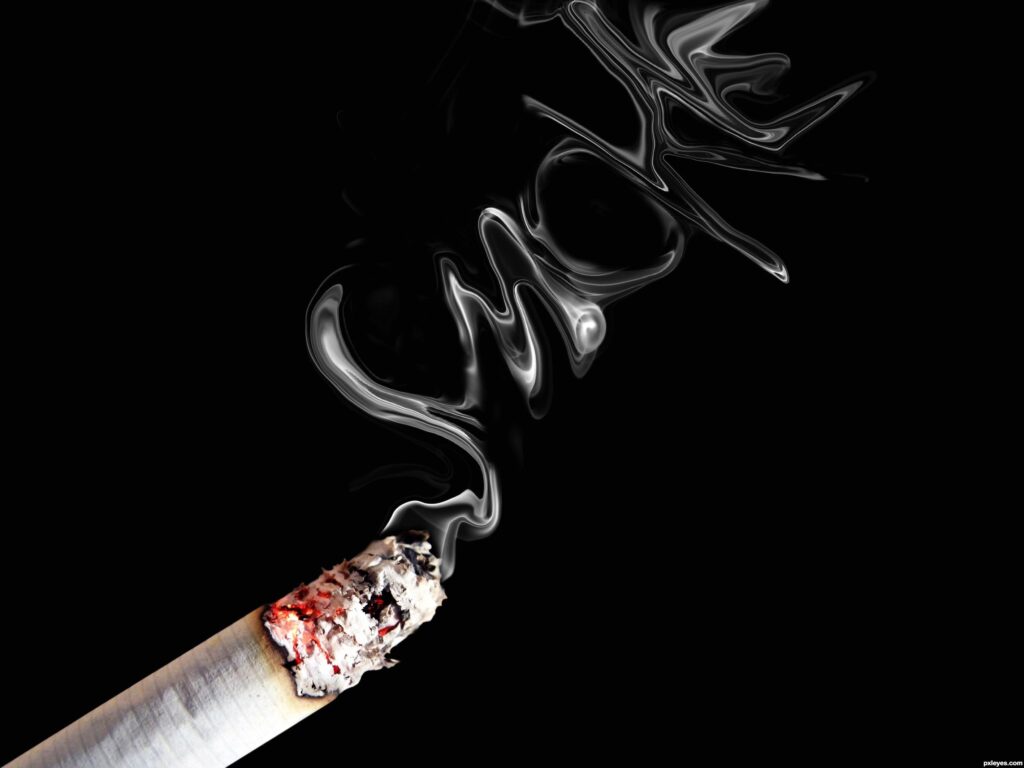Smoking kills more than 7 million people every year worldwide. However, how many people actually know the real culprit behind these alarming death tolls, and that while nicotine is addictive and not risk-free, it is the smoke in the smoking that is the primary cause of these deaths?
To find an answer, Dr. Noel Brewer, a public health researcher at the University of North Carolina, surveyed over 10,000 participants regarding what they thought was the main toxin in a cigarette. The results showed a drastic gap in the knowledge of masses, as only about 28% of respondents correctly identified tobacco smoke as the real toxin as opposed to the popular misconception of nicotine being the harmful substance in a cigarette.
Today, as there are millions of active cigarette smokers in Pakistan smoking packs after packs every day, the chances of their knowledge being any better than those survey participants seem to be quite slim. As a result, they continue to put the lives of others and their own at risk by puffing cigarettes, exposing their lungs to a host of cigarette smoke-specific carcinogens while also making the air equally toxic for others.
While it is from the burning of tobacco that produces flavors and blends that addicts a smoker, the same combustion process also produces more than 6,000 chemical substances, out of which about 100 chemical substances have been identified as the cause of smoking-related diseases including lung cancer, cardiovascular disease and emphysema.
The U.K. National Institute for Health and Care Excellence (NICE) also stresses that it is the toxins and carcinogens produced by the tobacco smoke, including tobacco-specific nitrosamines and benzene which are the main cause of smoking-related diseases. Scores of other studies have also suggested that it is tobacco smoke and the 7,000 toxic chemicals released with it that are the main culprits behind the preventable diseases caused by a cigarette.
Thus, when taken separately in a moderate dose, nicotine can prove to be an effective harm-reduction tool for smokers who find it difficult to quit. This is the reason why nicotine is now widely being used in the form of nicotine replacement therapies (NRTs) to help smokers around the world minimize their consumption of tobacco smoke toxins while also reducing risks of relapses due to strong addiction.
The NRTs, some of which are approved by the Food and Drug Administration (FDA), aim to reduce nicotine withdrawal symptoms and help adults quit smoking and control their addiction by delivering a small amount of nicotine to the brain without the toxic chemicals contained in cigarette smoke. The FDA has further identified nicotine therapies as some of the safest and effective cessation methods for helping addicted smokers quit their addiction altogether.
In recent years, authorities have increasingly realized that product regulation is essential for effective action related to the tobacco epidemic. The best form of product regulation, therefore, will be multifaceted, and it will reflect the needs of smokers and other elements of successful tobacco control measures.
Therefore, in order to initiate effective smoking cessation strategies at a micro level, where smokers can guide their own quitting journey as per their individual needs, it is extremely important to first create mass awareness about the aspects of a cigarette, the impact each component has on a human body, and how these impacts can be altered to approach complete cessation.
Such measures allow smokers to choose and have access to safer alternatives, enabling them to control their tobacco use and reduce their and others’ exposure to toxins in cigarette smoke.




